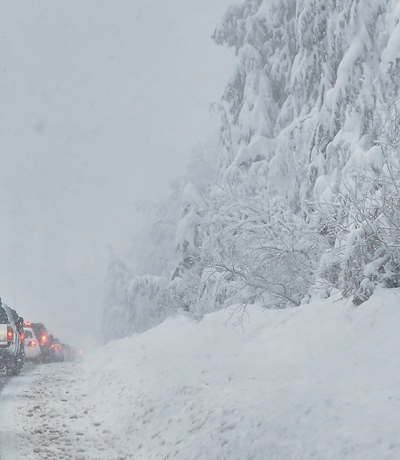Winter travel watch vs advisory: what’s the difference?
13 January 2023
Oof, it’s been a rough week for travelers. We feel your pain if you’ve been caught in the FAA outage or the heavy rains on the west coast.
If you’re traveling by car this winter, you may be paying attention to the recommendations for weather events and wondering what they mean specifically for your travel plans.
Specifically, how do you know if you should put the family and bags in the car?
We’re here to help. Here’s what you need to know about winter travel messaging.

Who issues winter travel messages?
The National Weather Service’s National Oceanic and Atmospheric Administration is in charge of protecting the lives of Americans with timely weather information.
Their website is appropriately named: weather.gov. Nice and tidy, right?
These are the folks that issue messages to help travelers, and you can refer to their website for local information by typing in the city, state, or zip code.
The winter travel message levels are:
- Watch
- Warning
- Advisory
What’s a winter storm watch?
When a winter storm watch is issued, the weather conditions are favorable for a particular winter storm event. The winter storm event may or may not happen, but if it does, it could indicate a life-threatening event.
Winter storm watches are typically issued at least 24 hours in advance of the potential event.
The watch will be upgraded to a warning or advisory if a winter storm becomes imminent.
What it means for your trip
If you’re traveling in a location with a winter storm watch, caution is recommended. If you can leave the area early (aka, ahead of the potential storm), do so. If you can delay your trip until the weather clears, do that.
Essentially, it’s precautionary information that you can use to adjust your travel plans.
Example: Here’s a recent example of a travel watch message for a heavy snowstorm.
What’s a winter storm warning?
A winter storm warning is issued when a weather event is 50% or more likely to occur. Winter travel warnings indicate conditions that threaten life or property.
The warning will be upgraded to an advisory if the weather event is likely to occur.
What it means for your trip
Winter storm warnings indicate more dangerous conditions, and the recommendation is to wait until it passes. Roads are typically not closed for winter storm warnings, giving travelers the choice, but if you can put your travel plans on hold, that’s best.
Example: Here’s a recent example of a winter travel warning message for an arctic storm.
What’s a winter storm advisory?
A winter storm advisor is issued when a weather event is 80% or more likely to occur. Winter travel advisories are the most serious and significantly hinder travel.
What it means for your trip
If you have travel plans and a winter storm advisory is issued, you should stay put. Roads, businesses, parks, etc., are likely to be closed.
Example: Here’s a current example of a travel advisory message for the winter storms in California.
How are winter travel messages communicated?
Notices are typically communicated to the public through local and national news media. Meteorologists will receive weather updates from the National Weather Service and discuss the watches, warnings, and advisories on their newscasts.
A weather app can update you on weather information and winter storm messages.
Here are the latest recommendations for the best weather apps.
Related topics
Damian Tysdal is the founder of CoverTrip, and is a licensed agent for travel insurance (MA 1883287). He believes travel insurance should be easier to understand, and started the first travel insurance blog in 2006.
